✨ Introduction: Why “The Boy Who Cried Wolf Story in English” Still Matters Today
Stories never fade — they travel across time, languages, and generations.
Among the hundreds of moral tales ever written, The Boy Who Cried Wolf Story in English remains one of the simplest yet most powerful lessons about honesty, trust, and responsibility.
At first glance, this might look like a story only for children.
But the truth is, it mirrors something deep within every human being — the temptation to lie for attention and the heavy price of losing trust.
Every culture has its own version of The Boy Who Cried Wolf Story in English.
In ancient Greece, it appeared in Aesop’s Fables.
In India, we find similar tales in the Panchatantra.
The message stays the same: once trust is broken, even truth cannot save us.
Why does The Boy Who Cried Wolf Story in English still feel relevant in the modern world of social media and fake news?
Because today, more than ever, truth has become the rarest virtue.
This story teaches children and adults alike that honesty builds bridges, while lies burn them.
So let’s revisit this timeless tale — not just as a bedtime story but as a reflection on our own behavior, our values, and the society we live in.
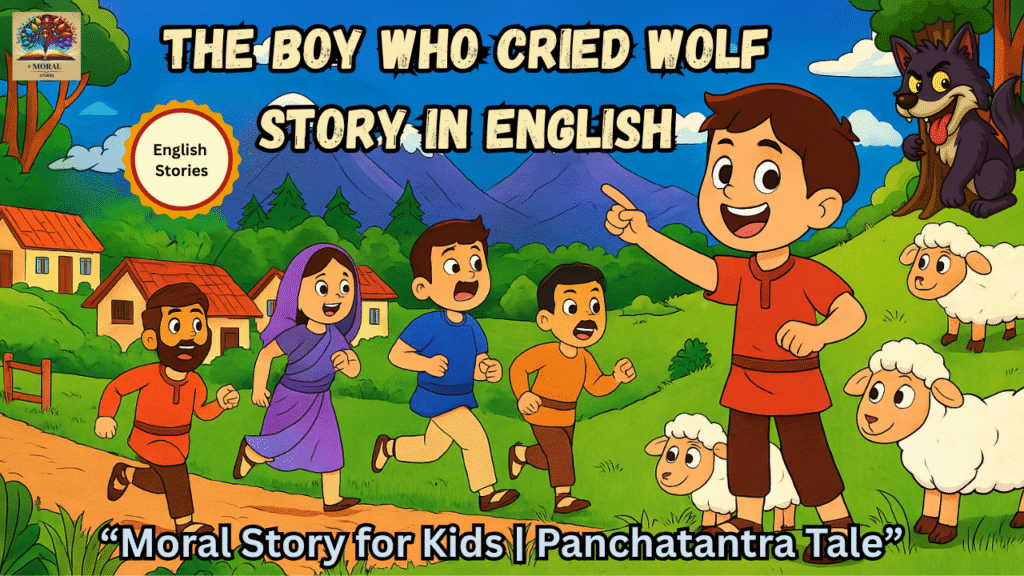
🧒 The Shepherd Boy and His Daily Life
Once upon a time, there lived a young shepherd boy who took his flock of sheep to graze near a green hillside.
Every morning, he counted the sheep one by one and led them toward the valley, where cool streams and soft grass awaited.
His job was simple — protect the sheep from danger, especially from wolves that lived deep inside the forest.
At first, The Boy Who Cried Wolf Story in English paints a peaceful picture — clear blue skies, the sound of bells around the sheep’s necks, and the boy sitting under a shady tree.
But slowly, boredom crept into his mind.
There were no friends to play with, no one to talk to, no excitement at all.
He looked around and muttered,
“All day I sit here doing nothing! No wolf ever comes! No one even cares about me!”
As he watched the quiet fields, a mischievous idea entered his head — an idea that would soon change his life forever.
🐺 The First Lie – “The Wolf Has Come!”
In a moment of childish fun, the boy stood up, took a deep breath, and screamed as loudly as he could,
“Help! Help! The wolf has come! The wolf is attacking my sheep!”
His voice echoed through the valley.
The villagers in the nearby houses heard his cries.
They dropped their tools, grabbed sticks, and ran up the hill shouting,
“Don’t worry, we’re coming!”
When they reached the meadow, they found… nothing.
No wolf. No danger. Just the shepherd boy rolling on the ground, laughing uncontrollably.
“Ha-ha-ha! You should have seen your faces! I fooled all of you!”
The villagers were angry.
One of them said sternly,
“Boy, don’t ever shout ‘wolf’ when there’s no wolf. If you keep lying, no one will believe you when the real wolf comes.”
The boy nodded but kept smiling.
He thought it was the funniest day of his life.
Little did he know that The Boy Who Cried Wolf Story in English was just beginning.
😂 The Second Trick – The Villagers Get Angry
A few days later, boredom struck again.
The boy remembered how everyone had come running before, and he missed that attention.
So once more, he cupped his hands around his mouth and cried out,
“Wolf! Wolf! Help! The wolf is back!”
The villagers groaned, but some of them still ran up the hill, thinking the boy might be in real danger this time.
When they arrived — again, no wolf.
This time, the boy was laughing even harder.
“You people are so silly! You believed me again!”
The villagers were furious.
One elderly farmer wagged his finger and said,
“You’ve made fools of us twice. Don’t expect us to come again!”
The boy waved them off.
He was too busy laughing to understand the gravity of his actions.
😱 The Real Wolf Comes – Truth Ignored
Days passed peacefully after the boy’s second prank.
The villagers no longer paid attention to his shouting.
And deep down, the boy believed that nothing bad would ever happen.
But one evening, as the sun dipped low and the sheep wandered toward the forest edge, a pair of glowing eyes appeared between the bushes. 🌒
The boy froze.
It was a real wolf — sharp teeth glistening, growling softly, moving closer to the sheep.
His heart pounded.
His voice trembled.
He screamed louder than ever before:
“Help! Please help! The wolf has come! It’s real this time! Someone save me!”
But the valley remained silent.
No one came running.
No footsteps. No villagers. Only the echo of his own desperate cries.
The wolf leaped among the sheep, scattering them in terror.
The boy tried to chase it away with a stick, but it was no use.
By the time help finally arrived — long after sunset — several sheep were gone.
Tears streamed down the boy’s face as he whispered,
“They didn’t believe me… because I lied before.”
And that’s how The Boy Who Cried Wolf Story in English turns from a funny tale into a heartbreaking lesson about truth and trust.
💔 The Boy’s Regret and the Lost Trust
The next morning, the villagers came to see the damage.
The meadow was silent, the grass scattered with tufts of wool.
The boy sat there quietly, ashamed and heartbroken.
One villager asked,
“What happened?”
The boy replied softly,
“I shouted for help, but no one came… because I lied before. The wolf came and took my sheep.”
An old man put his hand on the boy’s shoulder and said,
“This is why we warned you. Once a liar, always doubted — even when he speaks the truth.”
The boy realized that his laughter from those earlier days had turned into tears of regret.
He promised never to lie again, no matter how small the reason.
Thus ends the core of The Boy Who Cried Wolf Story in English,
a story that shows that truth is like glass — once broken, it can never shine the same way again.
🌍 The Moral Meaning – Truth, Trust, and Responsibility
At its heart, The Boy Who Cried Wolf Story in English is about the fragile nature of trust.
It’s easy to earn attention by lying once or twice, but once people lose faith in your words, no amount of truth can repair that damage.
Trust is like a thread — every lie weakens it until it finally snaps.
This story also highlights responsibility — the duty to protect what we are entrusted with.
The boy’s job was to care for the sheep, but he chose entertainment over duty, and that mistake cost him dearly.
The moral of the story is clear:
“No one believes a liar, even when he tells the truth.”
This line is as powerful today as it was centuries ago, and that’s why The Boy Who Cried Wolf Story in English continues to be told in homes and classrooms around the world.
📜 15 Life Lessons from The Boy Who Cried Wolf Story in English
- Honesty is priceless – once lost, it can’t be bought back.
- Lying destroys relationships, even with those who love you.
- Trust takes years to build, seconds to break, and forever to repair.
- Responsibility is not a game. Do your duties with care.
- Every lie has consequences, even if it seems harmless.
- Attention-seeking is temporary; reputation is permanent.
- A good reputation is better than a clever joke.
- People forgive mistakes but not dishonesty.
- Lies can make you laugh today but cry tomorrow.
- Truth always wins, though sometimes it takes time.
- Respect others’ trust — it’s a gift, not a right.
- Think before you speak — your words carry weight.
- Regret hurts more than boredom ever could.
- Actions speak louder than excuses.
- Be the kind of person whose word is worth believing.
These lessons make The Boy Who Cried Wolf Story in English not just a tale for kids,
but a reflection for adults too — especially in an age when false promises spread faster than truth.
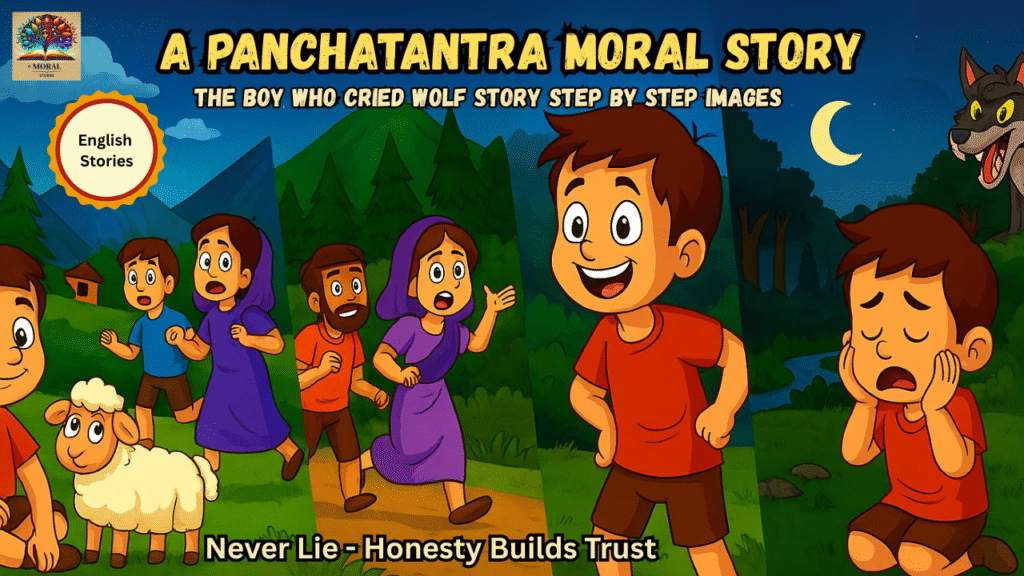
🌱 Modern Relevance – Why This Story Still Teaches Us in the Digital Age
In today’s digital world, we all live surrounded by news, messages, and social media posts.
But not everything we see or hear is true.
Just like the boy who cried “wolf” for attention, people now spread rumors, fake stories, or emotional lies just to gain likes and followers.
The modern version of The Boy Who Cried Wolf Story in English plays out every day on screens —
when misinformation spreads faster than facts,
when fake alerts cause panic,
and when real issues get ignored because people stop trusting the source.
The story reminds us that truth is power.
Every time we choose honesty over hype,
we make our world a little more trustworthy.
It also teaches children that being responsible — in school, at home, and online —
is not just about rules, but about earning trust through integrity.
So, whether it’s speaking the truth in small matters or being genuine online,
the message remains eternal:
“Don’t cry wolf — say what’s true, and your voice will always matter.”
📘 Vocabulary for Kids & International Readers (The Boy Who Cried Wolf Story in English)
Here are some important words from The Boy Who Cried Wolf Story in English that help young readers understand it better 👇
| Word | Meaning (Simple English) |
|---|---|
| Shepherd | A person who takes care of sheep. |
| Flock | A group of sheep or birds. |
| Wolf | A wild animal that hunts other animals. |
| Lie | Saying something that isn’t true. |
| Truth | What is real and honest. |
| Trust | Believing someone’s words or actions. |
| Regret | Feeling sad about a mistake you made. |
| Responsibility | Duty or task you are expected to do. |
| Consequences | The result of your actions. |
| Lesson | Something important you learn from an experience. |
Encourage children to use these words in small sentences to understand their meaning better.
For example:
- “The shepherd takes care of his flock every morning.”
- “Once you lose trust, it’s hard to get it back.”
These small vocabulary lessons make The Boy Who Cried Wolf Story in English an ideal learning resource for school and home.
📘 More Stories :
- The Foolish Lion and the Clever Rabbit Story in English | Panchatantra Moral Story for Kids with Summary, Moral and Life Lessons
- 🦆➡️🦢The Ugly Duckling Story in English – A Touching Moral Tale for Kids
- The Cap Seller and the Monkey Story in English | A Moral Story for Kids with 12 Smart Life Lessons
- 🐑 The Three Sheep and the Monster Story in English – Monster Trapped by Teamwork
- The Ant and the Grasshopper Story in English – A Moral Tale on Hard Work and Preparation
- The Sun and the Wind Story – A Timeless Moral Story for Children and Adults
🏡 Activities for Parents & Teachers (The Boy Who Cried Wolf Story in English)
Make this classic story come alive with fun, educational activities for children 👇
- 🎭 Role Play: Let kids act out The Boy Who Cried Wolf Story in English. One child can play the shepherd, others the villagers, and one the wolf.
- 🧩 Moral Quiz: Ask, “Why did no one believe the boy at the end?” and “What would you do differently?”
- 🎨 Drawing Time: Draw the wolf, the boy, and the sheep — and write one moral on the picture.
- ✍️ Write Your Own Ending: Let kids imagine what would happen if the boy had told the truth from the start.
- 💬 Group Discussion: Talk about honesty and what happens when we lie, even once.
- 📖 Compare Tales: Compare this story with “The Honest Woodcutter” or “The Ant and the Grasshopper.”
- 💡 Honesty Pledge: Encourage children to write a small “Truth Promise” for the week.
- 🎵 Story Song: Create a short rhyme about truth and lies based on the story’s theme.
- 📱 Digital Learning: Show a short animation of The Boy Who Cried Wolf Story in English and discuss what kids learned from it.
- 💞 Family Talk: Parents can share real-life examples of when honesty made a difference.
These activities ensure that The Boy Who Cried Wolf Story in English isn’t just read — it’s experienced and remembered. 🌟
❓ FAQs About “The Boy Who Cried Wolf Story in English”
Q1. What is the main moral of The Boy Who Cried Wolf Story in English?
👉 The story teaches that lying destroys trust — once people stop believing you, even truth cannot help you.
Q2. Who wrote The Boy Who Cried Wolf Story in English?
👉 It’s an ancient tale from Aesop’s Fables, one of the oldest collections of moral stories in the world.
Q3. What happens to the shepherd boy at the end of The Boy Who Cried Wolf Story in English?
👉 He loses his sheep because no one believes his cries for help — a punishment for lying too often.
Q4. What does the wolf symbolize in this story?
👉 The wolf represents real danger or truth — something we ignore when we stop believing in honesty.
Q5. How is The Boy Who Cried Wolf Story in English relevant today?
👉 It mirrors our modern world, where lies, fake news, and false promises make people stop trusting what they hear.
Q6. What age group is this story best for?
👉 Ideal for children aged 6 to 12 years, but even adults can reflect on its meaning.
Q7. Is there a Hindi version of The Boy Who Cried Wolf Story in English?
👉 Yes! It’s popularly known as “झूठा गड़ेरिया” in Hindi — same message, same lesson.
The Fox and the Grapes Story in English | Short Moral Tale for Kids (Aesop’s Fable)
🎥 YouTube Channel Subscribe CTA
👉 Subscribe to our YouTube channel for more fun moral stories for children!
🔗 YouTube Channel – A Moral Stories (English)
Enjoyed this heart-touching tale? Subscribe to our YouTube Channel “A Moral Stories” to enjoy more moral stories for kids in English, animated and narrated with love! 🌟📺
Also available in:
🔹 Gujarati – A Moral Stories Gujarati
🔹 Hindi – A Moral Stories Hindi
✨ Final Thoughts – The Eternal Value of Honesty
In a world full of noise, exaggeration, and digital lies, The Boy Who Cried Wolf Story in English stands like a shining truth.
It reminds us that words are powerful — they can build trust or destroy it forever.
For children, this story plants the seed of integrity early in life.
For adults, it’s a mirror — showing how a single lie can undo years of truth.
Every time you hear someone shout “wolf,” think:
Is it a cry for attention, or a call for help?
That’s the brilliance of The Boy Who Cried Wolf Story in English:
it’s not just about a shepherd and a wolf —
it’s about all of us.
Because no matter how advanced our world becomes,
truth will always remain the foundation of every relationship, every trust, every story. 🌿
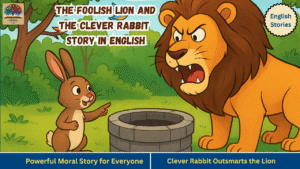
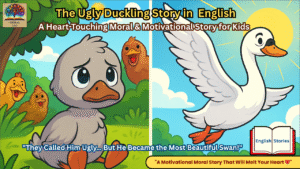
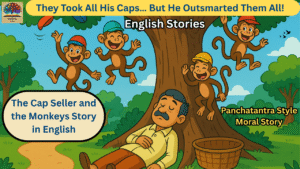
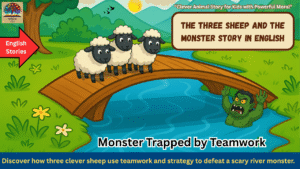


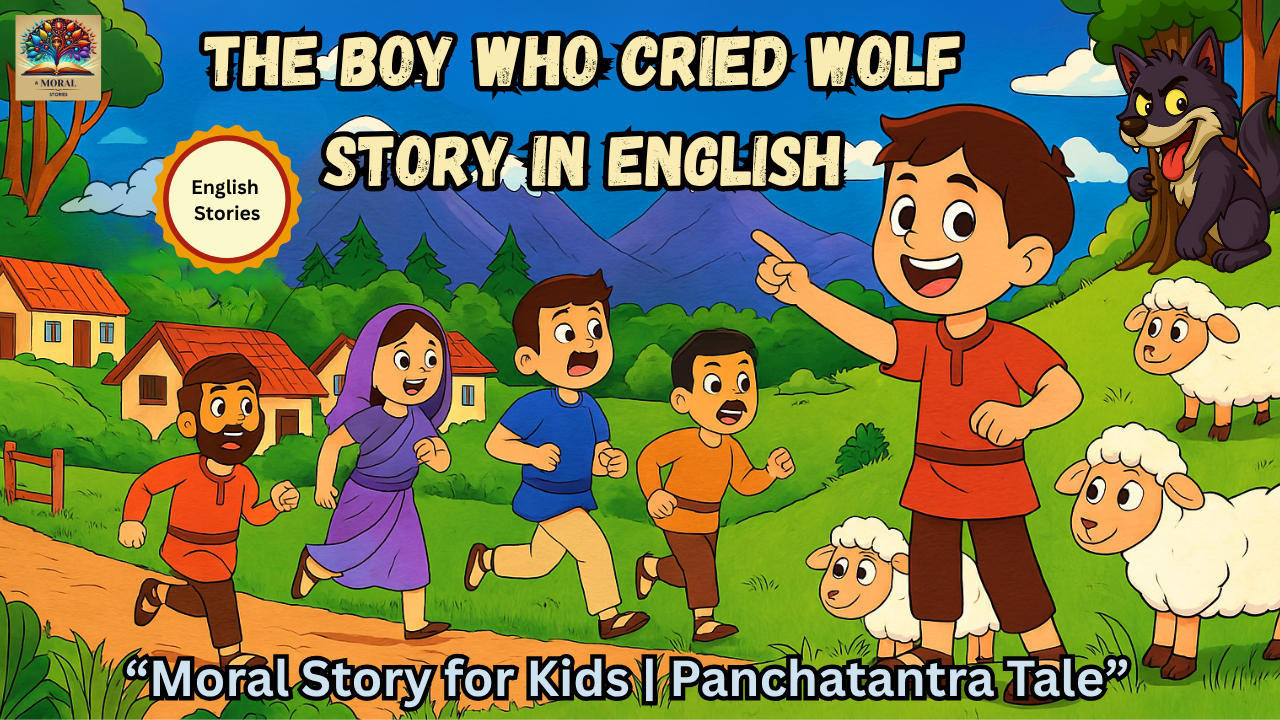

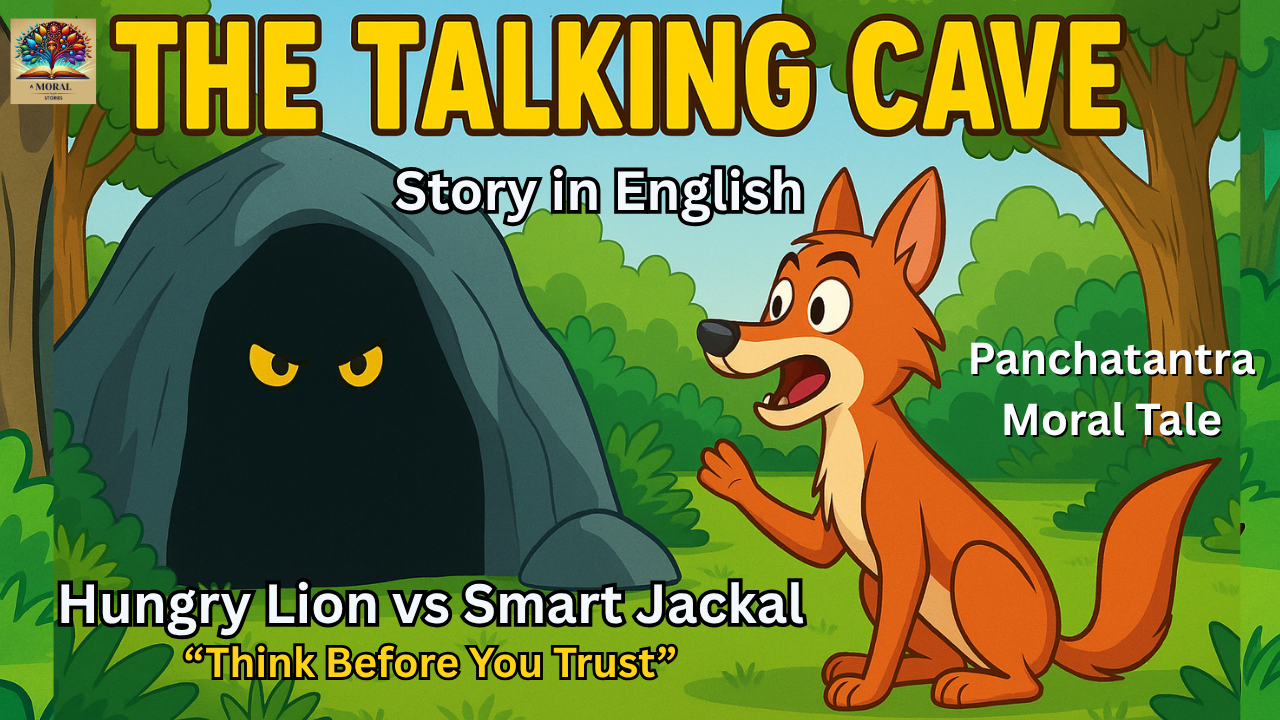

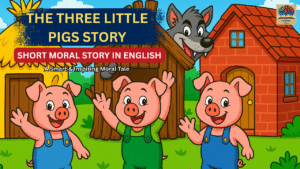
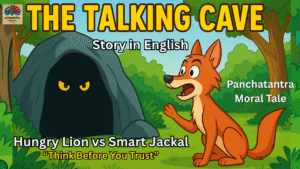




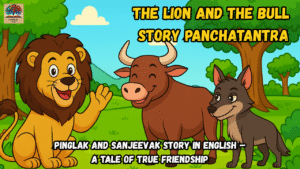
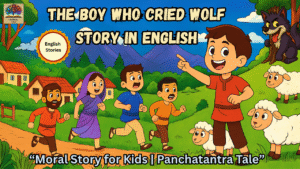



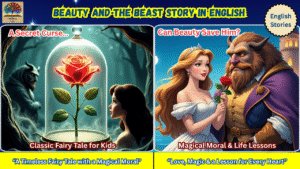
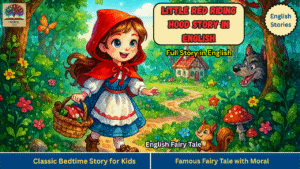
Post Comment